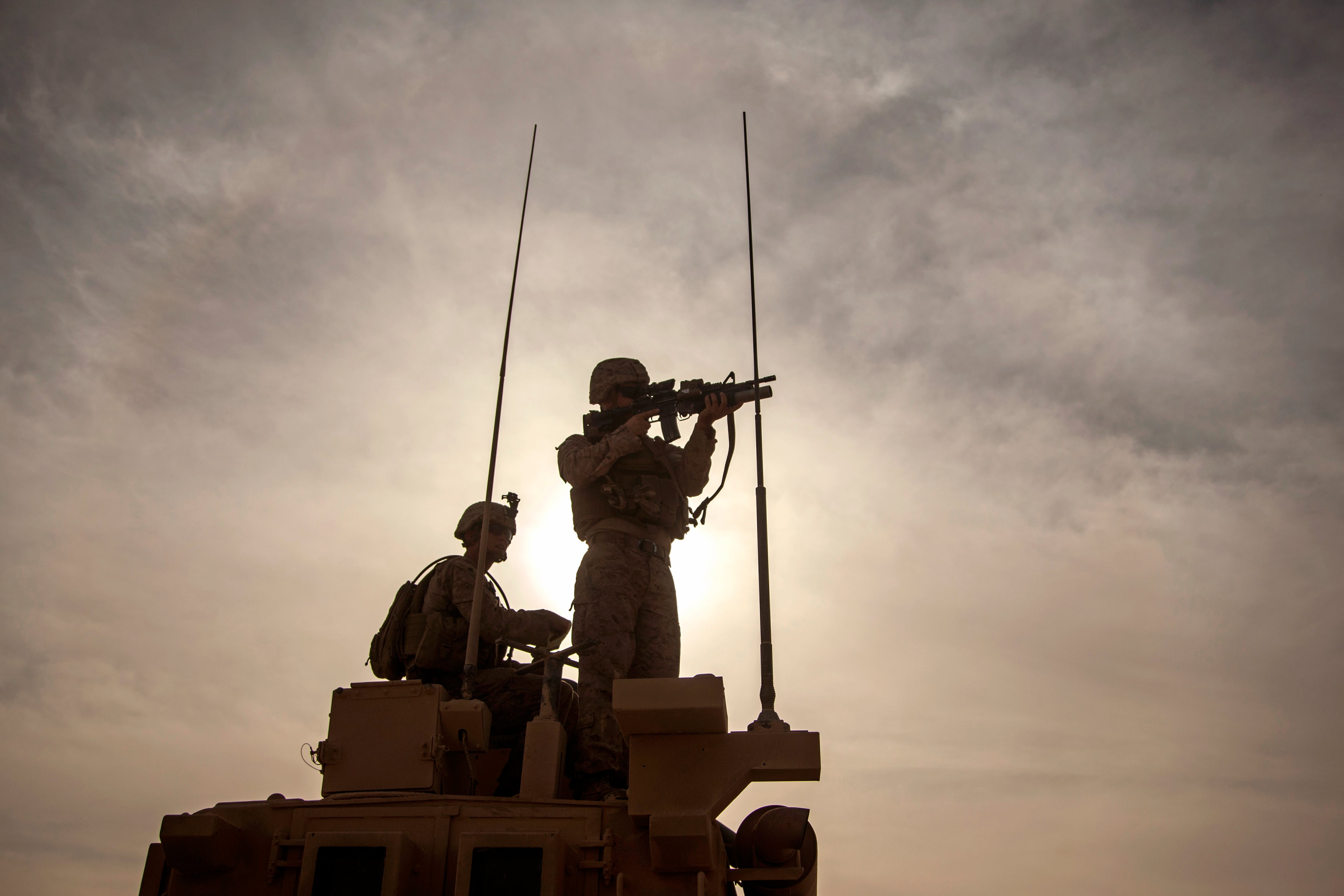The total number of drone attacks on bases in Iraq and Syria housing U.S. troops has grown to at least 23, a senior defense official told reporters Monday.
That amounts to at least 14 attacks in Iraq and at least nine attacks in Syria since Oct. 17, according to the official, who was not authorized to speak on the record.
“Many of these attacks were successfully disrupted by our military,” the official added. “Most failed to reach their targets thanks to our robust defenses.”
Some did successfully detonate, however, leaving a total of 21 U.S. troops injured so far.
Those “minor injuries,” after which troops returned to duty, occurred during separate attacks on al-Asad airbase in Iraq and al-Tanf garrison in Syria on Oct. 17 and 18, Pentagon spokesman Air Force Brig. Gen. Pat Ryder said Wednesday.
While bases housing U.S. troops in Iraq and Syria have come under somewhat regular attacks from Iran-backed militias, the attempts have ticked up significantly in October, as the U.S. has pledged support to Israel in its response to the Oct. 7 attack by Hamas.
The U.S. response has included moving two carrier strike groups and an amphibious ready group with an embarked Marine expeditionary unit to the eastern Mediterranean and putting 2,000 troops on 24-hour prepare-to-deploy orders.
In response to the drone attacks, the U.S. on Thursday struck two sites eastern Syria linked to Iran’s Revolutionary Guard Corps, which is known to collaborate with local militias.
“I think we’ve been crystal clear that we maintain the inherent right of defending our troops and we will take all necessary measures to protect our forces and our interests overseas,” Ryder told reporters during a Pentagon briefing that day.
The U.S. has also heightened force protection in the Middle East in anticipation of more of these attacks, including activating a Terminal High Altitude Area Defense battery and two Patriot missile air defense battalions to locations in U.S. Central Command.
Meghann Myers is the Pentagon bureau chief at Military Times. She covers operations, policy, personnel, leadership and other issues affecting service members.








